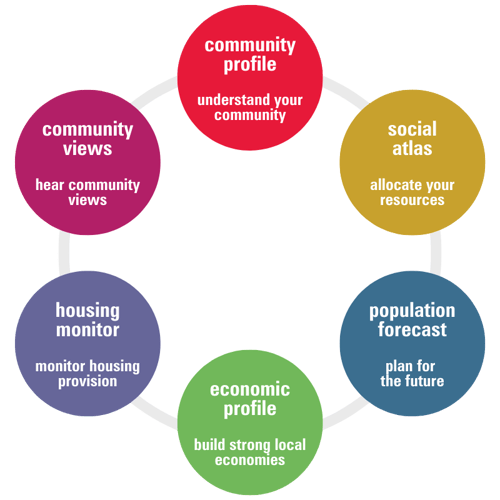Community profiles
Understand your community.
Tell the story of who lives in your community and suburbs, how it compares to other areas and how it is changing with Australia's most widely used online demographic information tool.
Local Governments' proximity to everyday lives positions them to have a direct impact on society. Planning for growing, changing communities, and delivering the services they need, is the core business of Local Government.
We believe that local decisions made on reliable data is one of the best ways to improve society. This is why .id (informed decisions) has focused on supporting Local Government since our founding.
The quality evidence-base the majority of councils use to prioritise expenditure for community services that meet residents' needs; make capital investments in the right place at the right time; win much needed grant funding; and harness the collective efforts of local business and community groups.

Our online information tools are designed to meet the needs of local government decision-makers. You told us what you need. This is what we heard ...
.id’s tools are delivered at geographies that support local decision making, so council can allocate resources across their LGA with a detailed understanding of each community.
Identify long-term cycles as well as shorter-term trends without having to be concerned about whether boundaries or data categories have changed.
All tools are designed for full public access, funded by council as a service for the wider community, including local businesses and potential investors.
Users who are familiar with tools at one location can easily switch to another. Councils working regionally can easily compare information with their neighbours or build a joint evidence-base.
We regularly improve our core information tools, adding new features and data based on our clients' feedback and in response to changes in the environment.
Subscriptions to our tools include direct access to the demographic and economic experts behind them. This includes ad-hoc support as well as regular staff training and briefings.
economics
Identify the issues and opportunities that will impact local industries and workers. The crucial first step for developing a long-term economic development strategy.
Learn morehousing | economics
Identify key occupations and workers, their role in the economy, and their capacity to afford housing close to work.
Learn moredemographics
A socio-economic evidence base for councils seeking to understand and address gender equity within their community.
Learn moredemographics
Profile communities within or beyond a service's catchment. Quantify demand and service levels, and ensure the community's needs are being met.
Learn morehousing
Understand the full scope of opportunity for more housing in your area and articulate the benefits to the community and economy.
Learn moredemographics
We bring together multiple data sources to give you the best possible view of current and future disability needs in your area.
Learn more